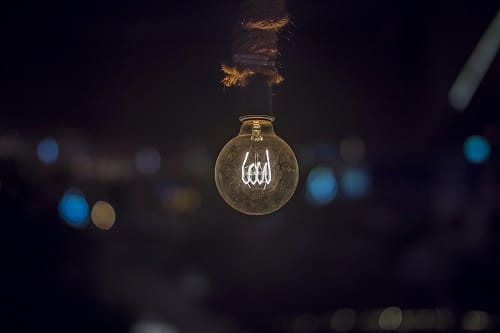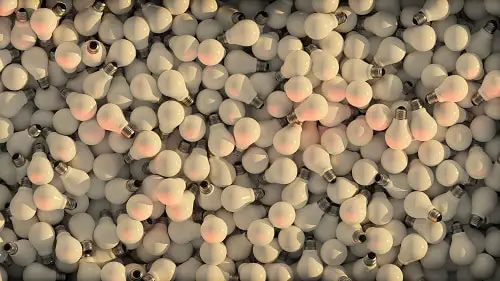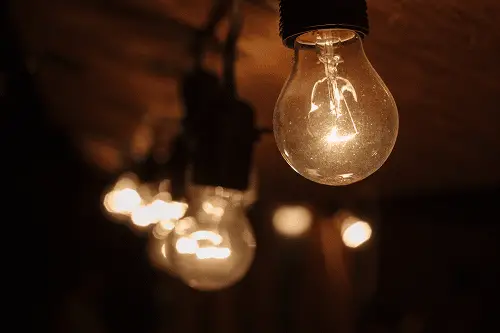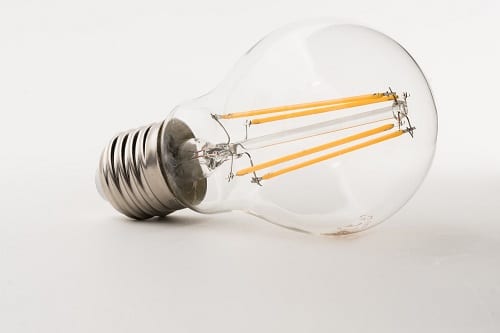Incandescent is one of the life-changing inventions. It was invented in 1879, by Thomas Edison.
The invention of the incandescent bulb has always been appreciated in electricity.
Before the invention, there have been several attempts to produce a lighting invention.
Different scientists have tried different possible means to come up with this revolutionary technology.
Today, we can talk about Thomas Edison being the inventor. He was credited for inventing the incandescent bulb.
The Invention of Incandescent Bulb
The rich history of the light bulb invention started in the 19th century when the industrial revolution was about taking the world.
Before Edison invented the incandescent bulb, a few contributors have been part of the story.
In 1800, Alessandro Volta developed the first known battery, one of the earliest methods of generating electricity.
His battery consisted of zinc and copper discs, divided by layers of soaked cardboard. Connecting each end of the discs was copper wire.
Also read:
Here’s a List of 30 Inventions in the 1800s [Inventors Included]
Sparks from the copper wire were also an early manifestation of lighting. Volta in London presented the discovery of a continuous electricity source.
Shortly after, in 1802, Humphrey Davy invented an electric arc lamp. The scope behind his invention was connecting the electrodes of charcoal to voltaic piles.

The arc of light was given forth between the carbon rods. Davy’s invention was a step up on Volta’s piles standing alone.
The two inventions were never seen as practical lighting sources. The arc lamp was too bright for private use, and it quickly burned out.
Throughout the 19th century, the principle behind Davy’s invention was utilized, and other electric lamps that were developed resulted from his design.
Towards 1840, a British scientist came up with his efficient bulb, substituting copper with a coiled filament.
The limitations of his bulb were due to the high cost of the platinum filament being used; it hindered his invention from being commercialized.
Another Englishman named William Staite worked on the lasting effect of the conventional arc but was hampered by the cost of batteries needed to power the lamps.
The cost of battery prevented him from also commercializing his invention.
Every other scientist was working to find a lighting solution one way or another through the earliest means of electricity.
In 1850, Joseph Swan, an English scientist, decided to counter the cost-effective problem encountered by previous inventors.
Ten years later, he built his bulb by replacing the coiled platinum filament with carbonized paper filaments. He filed for a patent and received it in 1878.
The secret behind Swan’s success was that he didn’t expose the carbon filaments to oxygen.
He placed the filaments in a vacuum tube to avoid much exposure, thereby extending their lifespan.
His vacuum tubes are no longer efficient as they were, and his prototype was seen as impractical but worked well for demonstrative purposes.
Who invented the Incandescent Bulb?
In 1879, Thomas Edison invented the incandescent bulb. Like every previous scientist who attempted, he studied Swan’s design carefully and discovered where the problem was.
A practical approach to Swan’s invention was to use a thin filament with high resistance and less current for it to glow.
He tried the practical approach to his design later that year, and it worked again.
The success of Edison’s demonstration was the technology the world was waiting on.

Incandescent Bulb Commercial Release
Edison invented the incandescent bulb; he later found his company, which he named Edison Electric Illuminating Company of New York in 1880.
When he first started, financial contributions came from wealthy investors at the time and from J.P. Morgan.
Edison’s company constructed electrical generating stations that were capable of powering electrical systems and bulbs.
In 1882, the first generating station was ready for use on Pearl Street in Lower Manhattan.
As time passed, Edison was above other competitors in his enterprise, especially when he developed a less expensive bulb.
Over 3,500 designs for bulbs were tested in his laboratory in New Jersey. He later filed for a patent for his electric lamps of carbon filament.
In his patent, he added all materials useful for the filament. They include cotton, wood, and linen.
After filing for a license, he spent more time testing over 6000 plants and looking for the material that would burn for a long.
In testing different plants, he and his team discovered bamboo filament could last for over 1200 hours. Edison’s started producing bulbs with carbonized bamboo filaments.
His invention became prominent until the early 1900s when the bamboo filaments were replaced with lasting materials.

One of the reasons why Edison was the known inventor of the incandescent bulb was because he commercialized his invention, unlike others that encountered setbacks.
His company also invented other electrical appliances like toasters and electric irons.
His company also contributed immensely to the spread of electricity when they developed a power transmission infrastructure useful for households.
After the success of Edison’s company, other inventors at that time came together with Edison to merge themselves with Edison Electric Illuminating Company of New York to form General Electric (GE)
The success of the new company was never halted. GE’s lighting department began the commercialization of fluorescent lamps in 1938.
In 1959, they invented the halogen lamp, and in 1962, they started making LED lighting. All of these lighting became a massive success over the years.
Incandescent Bulb Today
At some point, it looked like the US government was going to place a ban on incandescent bulbs production.
Restrictions were made concerning incandescent bulbs, and it looked like the production was coming to an end, paving the way for energy-efficient bulbs.
The Energy Independence and Security Act (EISA) once stated that each household would start using bulbs that consume 65% less energy than the popular incandescent bulbs.
This generally meant that a ban would be placed on LED and fluorescent bulbs because of their power consumption rate.
The Story changed towards the spring break of 2019 when the law was reversed. Several states and environmental groups were upset.
In states like California, the restriction on incandescent bulbs was upheld and still holds to date.
Today these bulbs can be found everywhere in the USA, except for the state of California.
This means one can be sued for using fluorescent bulbs or LED lighting.

Across the world, Governments of several nations have decided to phase out incandescent bulbs in favor of energy-efficient alternatives.
This means there is a ban on the manufacture, sales, and importation of these bulbs once the measures re-upheld.
In countries like Brazil and Venezuela, measures have been passed on energy-consuming bulbs, since 2005.
Countries like Australia and Switzerland started in 2009, Malaysia, Mexico, and South Korea began in 2014, Russia started in 2012, and Canada.
Alternative lighting solutions that will replace incandescent bulbs are mainly expensive energy-saving light bulbs.
To reduce the cost of energy savers, manufacturing firms have been supported by government subsidies in most countries.
Some firms have commenced the production of improved bulb and lamp designs. Lately, they are beginning to produce dimmable lights.
Also, the existing incandescent bulbs are being recycled to prevent the release of mercury.

